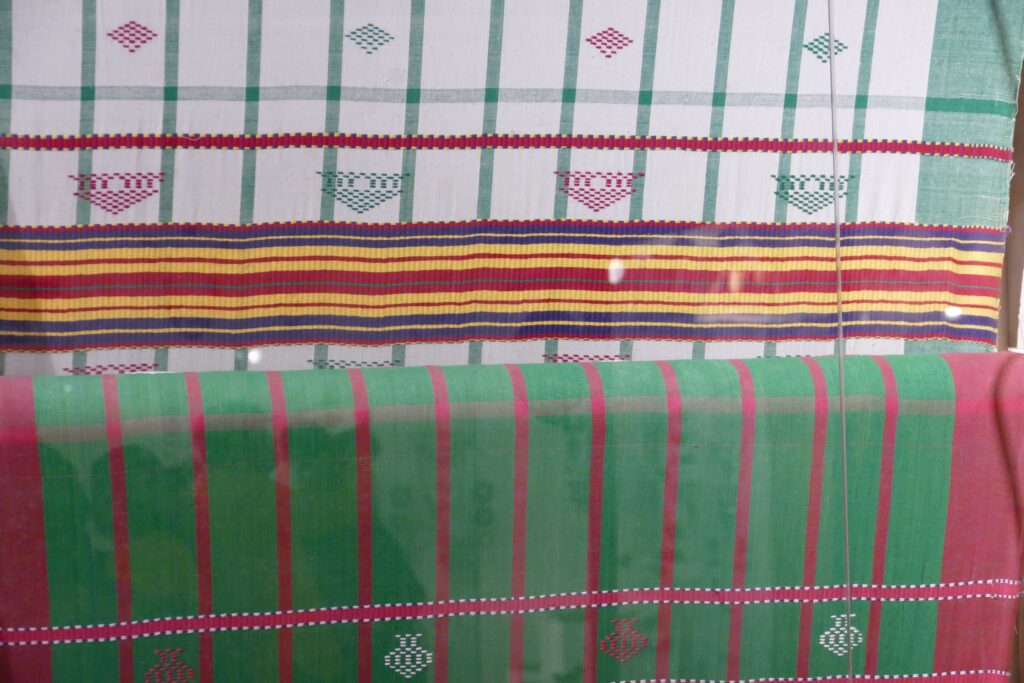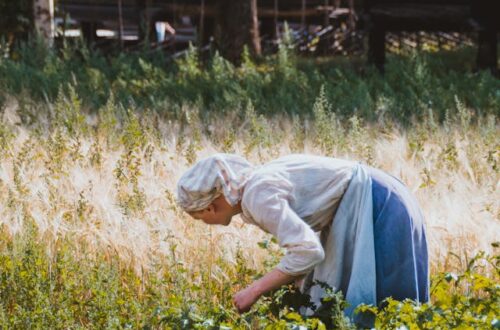
Maniabandha and Nuapatna Village in Odisha: A Tapestry of Craftsmanship
Introduction
The villages of Maniabandha and Nuapatna, nestled in the Cuttack district of Odisha, India, are renowned for their rich cultural heritage and exquisite craftsmanship. These villages are not only famous for their unique silk saris, known as Maniabandhi pata, but also for their deep-rooted traditions and vibrant community life. This blog post delves into the history, culture, and intricate artistry of these villages, shedding light on the significance of their contributions to India’s textile industry.
Historical Background

Origins of Maniabandha and Nuapatna
The history of Maniabandha and Nuapatna can be traced back to ancient times when these villages were established as centers of weaving and textile production. The tradition of silk weaving in this region dates back several centuries, with historical records indicating that the art was patronized by various dynasties and rulers.
Evolution of Silk Weaving
Silk weaving in Maniabandha and Nuapatna evolved over the years, influenced by various cultural and historical factors. The techniques and designs used in the weaving process have been passed down through generations, with each generation adding its unique touch to the craft. The result is a rich tapestry of tradition and innovation that continues to thrive in these villages.
Cultural Significance
Traditional Practices and Festivals
The culture of Maniabandha and Nuapatna is deeply intertwined with their weaving traditions. Festivals and rituals play a significant role in the lives of the villagers, many of which are centered around the weaving process. For instance, the festival of Durga Puja is celebrated with great fervor, and new saris are woven specifically for the occasion.
Role of Women in Weaving
Women play a crucial role in the weaving traditions of Maniabandha and Nuapatna. They are involved in various stages of the weaving process, from spinning the silk threads to weaving intricate patterns on the looms. The art of weaving is often passed down from mothers to daughters, ensuring the continuity of this age-old tradition.
The Art of Maniabandhi Pata

Characteristics of Maniabandhi Pata
Maniabandhi pata, also known as Maniabandhi silk sari, is distinguished by its intricate designs and vibrant colors. The saris are known for their unique motifs, which often include traditional symbols such as flowers, animals, and geometric patterns. The use of natural dyes and high-quality silk threads adds to the allure of these saris.
Weaving Techniques
The weaving process of Maniabandhi pata is complex and requires a high level of skill and precision. The weavers use traditional handlooms, and the entire process is done manually. The warp and weft threads are meticulously arranged to create the desired patterns, and each sari can take several days to complete.
Dyeing Process
The dyeing process is another crucial aspect of creating Maniabandhi pata. Natural dyes, derived from plants and minerals, are used to achieve the vibrant colors characteristic of these saris. The dyeing process is carried out with great care to ensure that the colors are evenly distributed and long-lasting.
Economic Impact
Livelihood of the Weavers
The weaving industry in Maniabandha and Nuapatna provides livelihood to a significant portion of the population. Most families in these villages are involved in the weaving business, either directly as weavers or indirectly through related activities such as dyeing and selling the finished products.
Challenges Faced by the Weavers
Despite the rich tradition and high demand for Maniabandhi pata, the weavers face several challenges. These include competition from machine-made textiles, fluctuating market prices, and the high cost of raw materials. Additionally, the younger generation is often reluctant to take up weaving as a profession due to the hard work and relatively low financial returns.
Preservation of Tradition
Government and NGO Initiatives
Various government and non-governmental organizations (NGOs) have undertaken initiatives to preserve and promote the weaving traditions of Maniabandha and Nuapatna. These initiatives include providing financial support, conducting training programs, and facilitating market access for the weavers.
Role of Education
Education plays a vital role in preserving the weaving traditions of these villages. Efforts are being made to incorporate traditional weaving techniques into the local education system, ensuring that the younger generation is aware of their cultural heritage and equipped with the skills needed to continue the craft.
Modern Influences and Innovations
Fusion of Traditional and Contemporary Designs
In recent years, there has been a growing trend of blending traditional designs with contemporary styles. This fusion has opened up new markets for Maniabandhi pata, attracting a younger and more diverse customer base. Designers and fashion houses are increasingly incorporating these saris into their collections, giving them a modern twist while preserving their traditional essence.
Use of Technology
The use of technology is gradually being integrated into the weaving process. While traditional handlooms remain the primary tool for weaving, digital designs and computerized patterns are being used to enhance precision and efficiency. This technological integration has helped the weavers to experiment with new designs and expand their creative horizons.
Personal Stories and Testimonials
Voices of the Weavers
The weavers of Maniabandha and Nuapatna have numerous stories to tell, each reflecting their dedication and passion for their craft. Many weavers have been practicing the art for decades, often starting as young apprentices under the guidance of their elders. Their personal accounts provide a glimpse into the challenges and triumphs of their daily lives.
Customer Experiences
Customers who purchase Maniabandhi pata often share their experiences of owning and wearing these beautiful saris. Many express their admiration for the craftsmanship and intricate designs, appreciating the effort and skill that goes into creating each piece. These testimonials highlight the emotional and cultural connection that people have with these saris.
Conclusion
The villages of Maniabandha and Nuapatna stand as a testament to the enduring legacy of India’s textile heritage. The art of Maniabandhi pata weaving is not just a means of livelihood but a symbol of cultural identity and pride for the people of these villages. Despite the challenges they face, the weavers continue to uphold their traditions with unwavering dedication and passion.
As we look to the future, it is essential to support and promote these traditional crafts, ensuring that the rich cultural heritage of Maniabandha and Nuapatna is preserved for generations to come. Through collective efforts, we can help sustain the livelihoods of the weavers and celebrate the timeless beauty of Maniabandhi pata.




